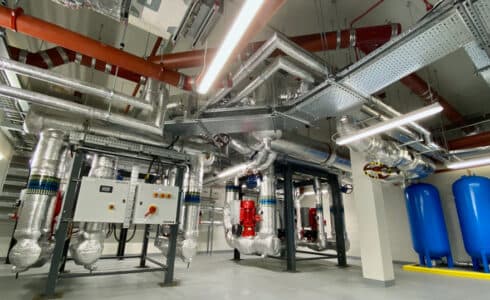Understanding Dew Point and Its Impact on Modular Cleanrooms
Dew point is the temperature at which air becomes fully saturated with water vapor and can hold no more moisture. When air cools to this temperature, water vapour condenses into liquid. This is a critical concept in environmental control, especially in cleanrooms where precise humidity levels are essential.
How Dew Point Affects Humidity
The dew point directly influences the humidity levels in a cleanroom. If the dew point is high, the air contains more moisture, leading to higher humidity. Conversely, a lower dew point means the air is drier. Maintaining the right dew point helps in controlling the overall humidity, which is vital for preventing contamination and ensuring product quality.
The Relationship Between Dew Point and Temperature
Dew point and temperature are closely related. As the air temperature drops, it approaches the dew point, leading to condensation. This relationship is crucial for cleanroom environments, where both temperature and humidity need to be tightly controlled to avoid moisture-related issues like mould growth and equipment malfunction.


